Across the road from the imposing King George V Memorial and down from the fluttering flags depicting Australia's (almost all) male prime ministers, a modest sculpture is now in place outside Old Parliament House, showing two groundbreaking women walking to take their place in history.
The sculpture of the first women elected to federal parliament, Dame Dorothy Tangney and Dame Enid Lyons, was unveiled in Canberra on a chilly Wednesday morning, on what was also International Women's Day.
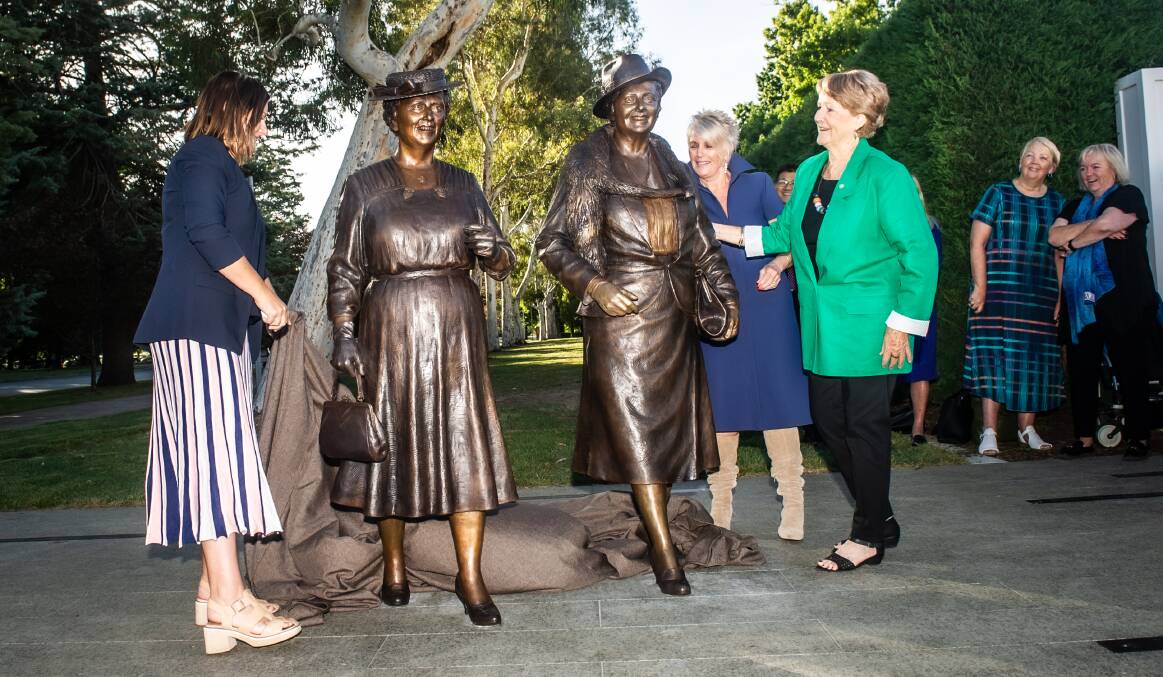
It is the first sculpture of women in the Parliamentary Zone.
And it was an immediate hit, everyone from school children to the teal independents wanting a photograph with it, affectionately holding on to and hugging the bronze as if the sculpted women were real.
The work, by Victorian sculptor Lis Johnson, references a famous photograph of the two women entering Parliament House for the first time, on September 24, 1943, after being voted in at the federal election the previous month, Tangney to the Senate and Lyons to the House of Representatives.

In the new work, the women are depicted walking from King George Terrace towards the front door of Old Parliament House, each wearing a hat and holding a handbag, a fox stole over Lyons' shoulders; a ribbon in Tangney's straw boater, their faces showing optimism and determination and a let's-get-this-done attitude.
The sculptures are almost life-sized, an extra 10 per cent thrown in to make the bronze sing (not for GST).
The work is located on King George Terrace across from Old Parliament House, next to the House of Representatives Rose Gardens. The Ladies Rose Garden and the Centenary of Women's Suffrage Commemorative Fountain are in the nearby rose gardens.
Lyons and Tangney were barely five-foot in real life, but were a towering presence for women in Australia.

Enid Lyons, stood for the short-lived, original United Australia Party, winning the seat of Darwin in Tasmania at the 1943 election (the seat named for Charles Darwin and later replaced by Braddon).
By the time she entered parliament, she was already a mother of 12, a dame of the British Empire and the widow of the former Australian prime minister Joseph Lyons. She served eight years in federal parliament, later serving the UAP's successor, the Liberal Party.
Dorothy Tangney was elected a Labor Senator for Western Australia at the 1943 election and was in parliament for almost 25 years. She was appointed a dame in 1968 upon her retirement.

Minister for Regional Development, Local Government and Territories Kristy McBain unveiled the sculpture, saying both women were pioneering and courageous, each interested in social issues and those that affected women and children.
"Dame Dorothy Tangney and Dame Enid Lyons were trailblazers for women in politics and for standing up for women's issues on a national level," she said.
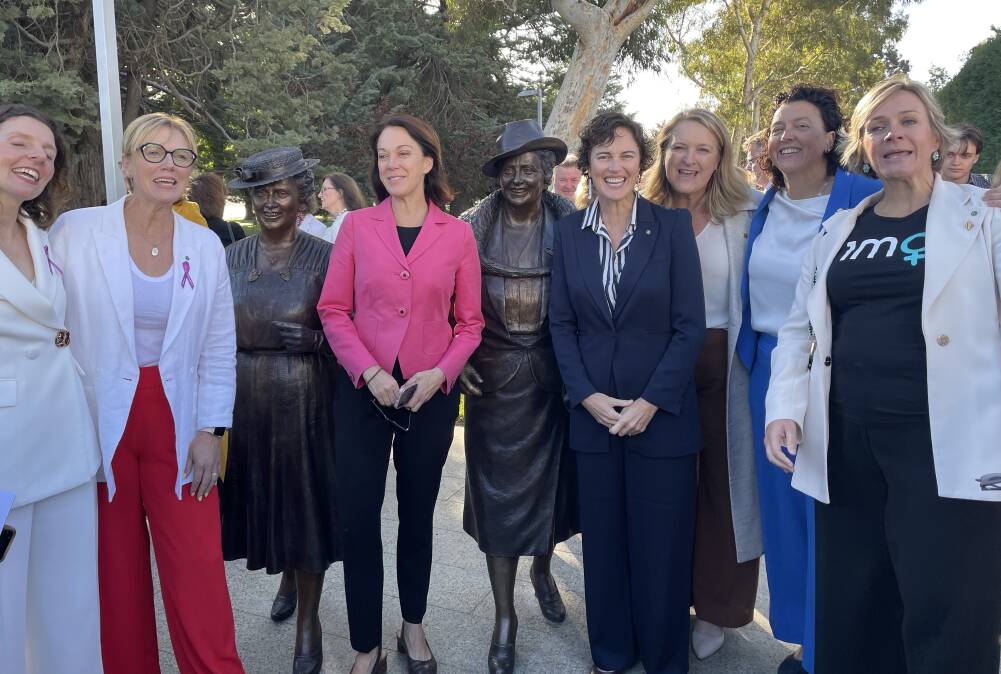
"They achieved this without political party support and in the midst of overwhelming negative coverage of female candidates in the media.
"They paved the way for hundreds of women with diverse voices and experience to pursue politics, and I've been so fortunate to follow their footsteps and deliver for women across my community."
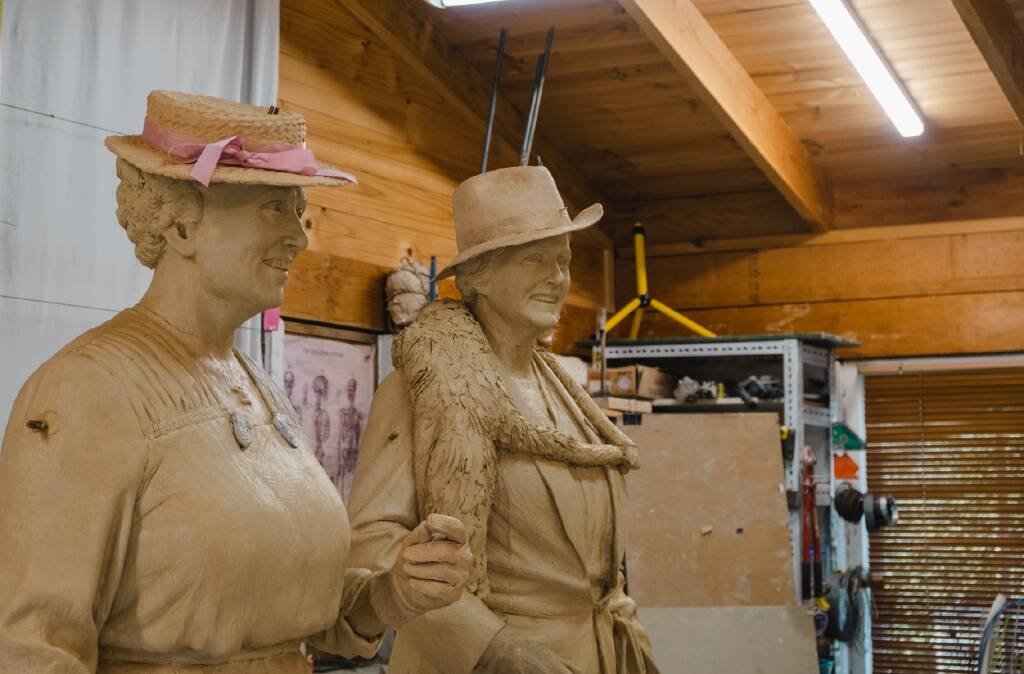
Members of both women's families were in Canberra on Wednesday morning to watch the sculpture's unveiling, with Enid's grand-daughter Libby Lyons and Dorothy's niece Maxine Muir speaking on their behalf. Dame Dorothy never married and all of Dame Enid's 12 children have passed away.
Libby Lyons, the daughter of the Lyons' sixth child, Kevin, said her grandmother often felt overwhelmed by the task at hand - "even for her" - but rose above her fears.
Ms Lyons quoted her grandmother at the unveiling: "We were firm believers in the rightness of women's claim to an active share in government and were determined to acquit ourselves well".
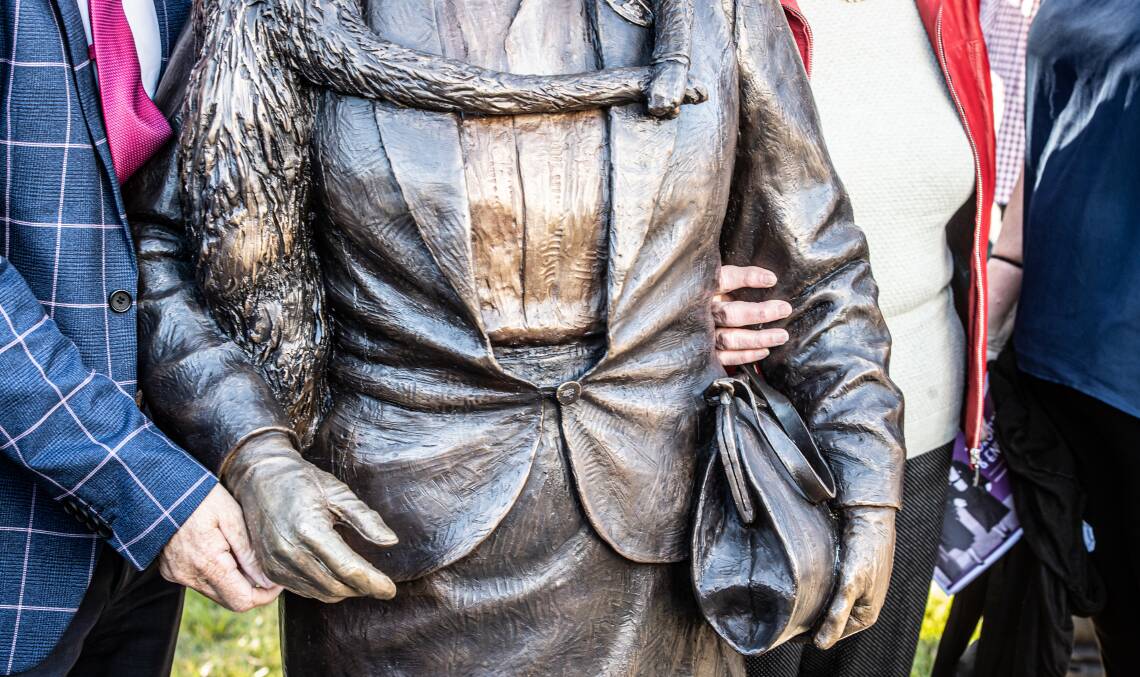
"Eighty years on, we're finally able to honour both dames in bronze," Ms Lyons said.
Mrs Muir, the niece of Dorothy Tangney, said her aunt never married nor had children. She was 36 when she entered parliament, and travelled by train the 3700km from Perth to Canberra, bringing her parents with her.

Mrs Muir said her aunt "was not a feminist".
"In her maiden speech, she said, and I quote, 'I realise my great honour in being the first woman elected to this chamber. It is is a citizen of the Commonwealth, not as a woman'."
Originally from Melbourne, Ms Johnson recently moved to county Victoria where she randomly found two women on the streets of Castlemaine who fit the mould and stood in as her models for Dorothy and Enid.
"Literally just driving along the street and seeing them and doing a double take and thinking, 'Hang on' and approaching them and saying, 'This is going to sound really weird, but...'," Ms Johnson said, with a laugh.
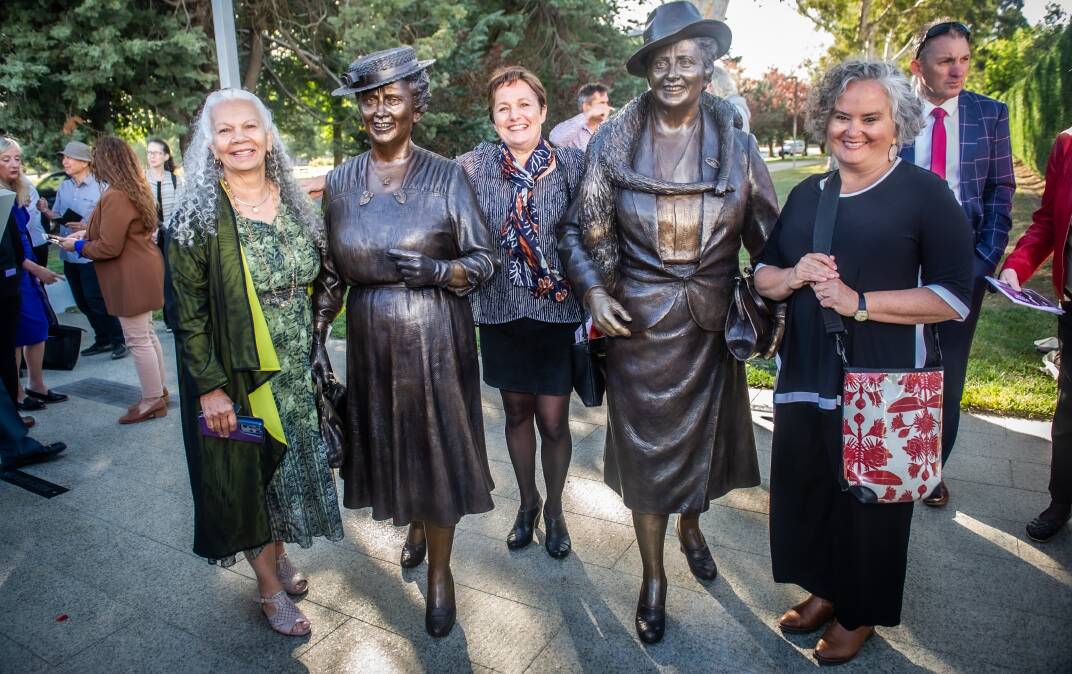
Both the life models - Danni Moore (Enid) and Stephanie Armstrong (Dorothy) were at the unveiling to celebrate the statue with Ms Johnson.
For the sculptures, Ms Johnson also consulted a vintage clothing expert. And got costumes made up to take cues from - the fall of a skirt, the turn of an ankle.
The project took most of last year to complete.
Ms Johnston said she wanted the women to look "a bit more natural" than the photograph of them walking into parliament together which she says was "obviously staged".

She was glad that the sculpture was positioned where lots of people would see it, including visiting school children on tours of Old Parliament House.
And, she said, the women's height and the size of the sculpture, made it very selfie-friendly.
"That's the idea of that scale and bringing them down to ground level so that people can relate to them directly," she said.
Ms Johnson was "very happy" to see the sculptures in place.

"How I was imaging them walking together, on the approach to the building, worked really well," she said.
"And the paving, which was all under wraps too, works really well. They're just down to earth, literally on the ground so you can go right up to them and directly relate to them because they're not on a plinth or anything."
The sculpture had already made an impact, even before it was brought to Canberra.
"Once I finish sculpting it in clay, it gets moulded, it goes to the bronze-casting foundry and the guys at the foundry had a couple of really interesting observations," Ms Johnson said.
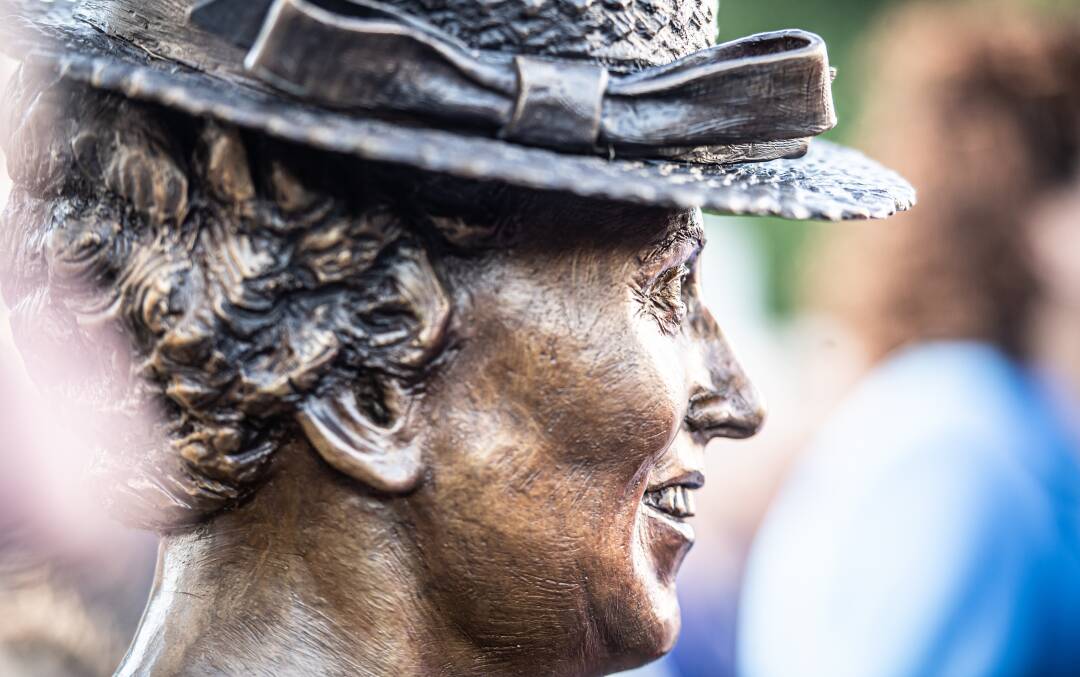
"One was they kept thinking there was someone standing there, because they're quite convincingly life-like, I guess.
"And the other thing they found really bizarre, and which made them really reflect on this, is that they've never done women like that, who look real. Real women who could be your mum or women that you know.
"They do a lot of statues of women but, of course, they're two extremes. They're either idealised physiques - dancers and mermaids and nymphs. Or they're the opposite, Madonnas and nuns and nothing in between, that's actually realistic.
"So, for that reason they had that extra uncanny feeling. They just weren't used to those kinds of bodies being there."
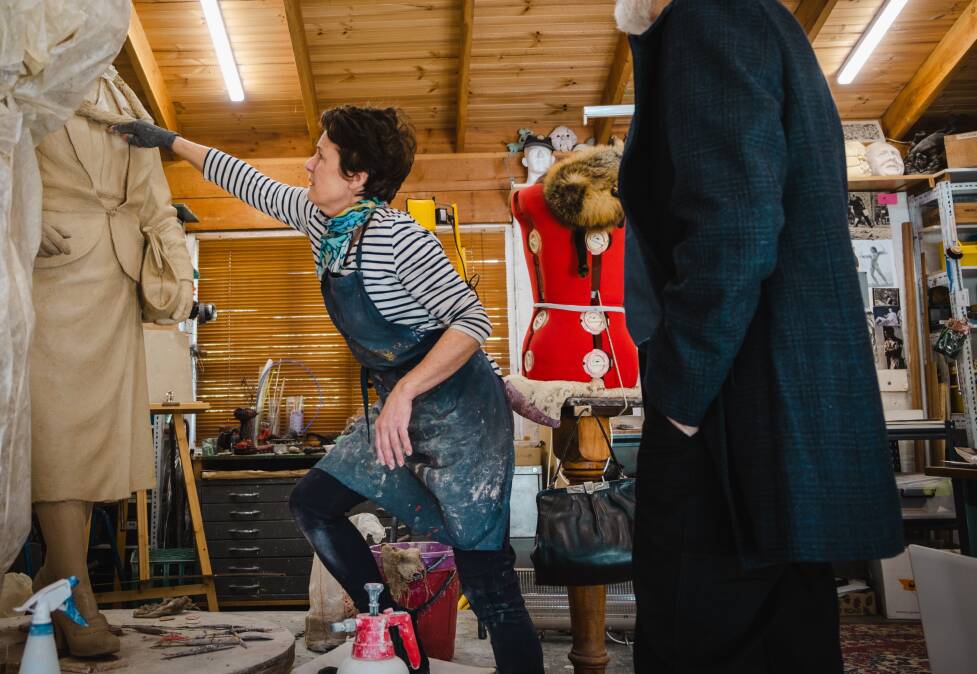
AFL great Nicky Winmar was also at the statue unveiling, there to support Lis Johnson. Now a painter and managed by Ms Johnson, Winmar was glad to see statues of women.
"It's about time. It's good the ladies are being recognised and we need more of them," he said.
National Capital Authority chief executive Sally Barnes said the sculpture cost $800,000, finally putting not one but two depictions of women in the Parliamentary Zone when before there was none.

"What better two to choose than the women who walked in side by side, not quite arm in arm, but side by side, to take their place in parliament?" she said.
"And the magic is they came from two completely different ends of the country, represented different parties, took their seats in different places in the parliament. And it wasn't just a moment in time, it was momentous. And it had flow-on effects for years and years."
Mrs Barnes was also excited to see how people related to the statue.

"I'm really looking forward to seeing young girls and women put their arms around them. Just that physical contact with these trailblazers," she said.
The National Capital Authority has previously also announced plans for a statue of Neville Bonner, the first Aboriginal Australian to enter federal parliament, who died in 1999.
"We've been talking to the family and we're giving them space to talk amongst themselves and talk to their family and come back to us about what they'd like," Mrs Barnes said.
"And we'll see. We'll see what they come back with."








